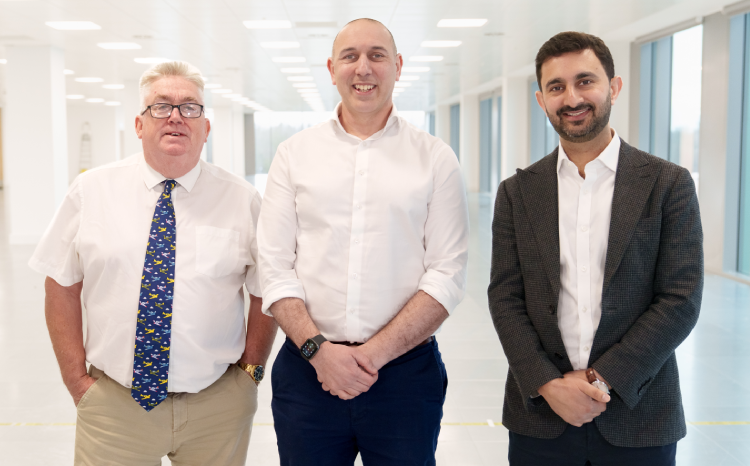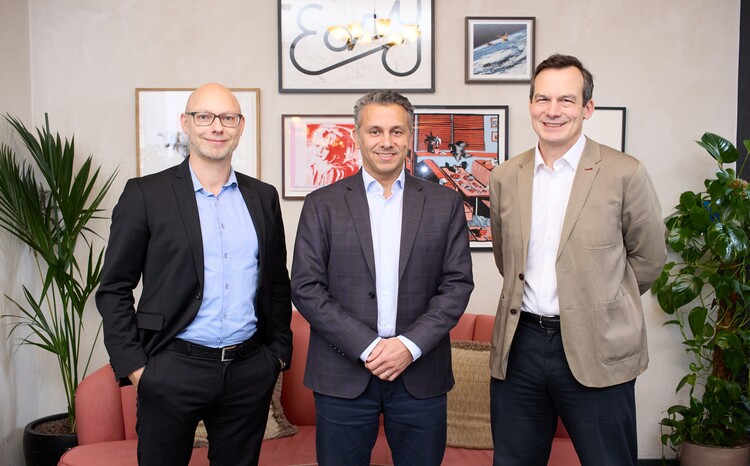Chocks away
- 18 September 2014

Cumbria plans to be paper-lite by March next year through a mix of technology approaches, and from the look of it, the region is on its way.
On an autumn trip by EHI that started at a hospital in its largest city, and finished at a GP practice in a town with just two taxis, not a single piece of paper could be spotted.
Dr William Lumb, a part-time GP and chief clinical information officer for NHS Cumbria Clinical Commissioning Group, explains the overall project has two different strands: static and dynamic.
He illustrates the point by drawing on a whiteboard in the dedicated IM&T meeting room on the first floor of the GP practice in Sedburgh, where he works.
An electronic referral and resource matching project, known locally as ‘air traffic control’, is the “dynamic bit.” It involves sending electronic referrals between acute, community and social care services, using technology from Strata Health.
Other projects involve sharing information between primary and secondary care, using Healthcare Gateway’s Medical Interoperability Gateway, and improving networks, software and hardware across the region.
The importance of the infrastructure part can’t be overlooked. Cumbria is huge, covers both urban and rural areas, and has some really big hills. So a BT fibre network, with 147 contact points, has been installed so healthcare staff can actually access the technology they are implementing.
Lots and lots of people to get on board
The Cumbria-wide project is one of NHS England’s integrated digital care record exemplars, and it has brought together a particularly wide range of organisations.
On board are: NHS Cumbria CCG; Cumbria County Council; University Hospitals of Morecambe Bay NHS Foundation Trust; North Cumbria University Hospitals NHS Trust; and Cumbria Partnership NHS Foundation Trust.
In addition, the project covers: Cumbria Care, the provider arm of the council, which runs 900 residential care beds; Hospices and Hospices at Home across Cumbria; Cumbria Health On Call, the out of hours provider; and the North West Ambulance Service NHS Trust.
Also involved are: Blackpool University Hospitals NHS Foundation Trust, where the referral system will be deployed next month to district nurses; and Cumbria Police, because it is part of the Cumbria Local Safeguarding Children Board, and there is a need to address e-referrals to children’s services.
The resource matching and e-referral system follows the patient journey, from clinicians filling out an electronic referral letter, to that being matched to local care providers, their capabilities and availabilities. The idea is that the patient’s journey can be planned effectively, particularly when they are being discharged from hospital.
Dr Lumb explains the air traffic control analogy: “If you were on a plane to Lanzarote, the plane wouldn’t leave the runway until it had been cleared by the airport, following the flight plan given by the air traffic controllers, and the destination airport had confirmed it could arrive. The same should apply to patients.”
Binning the fax machine (nearly)
Royal Lancaster Infirmary, part of University Hospitals of Morecambe Bay NHS Foundation Trust, started using the system for all referrals from hospital inpatient services to social services in July 2013.
A year later, in August this year, the trust went live with inpatient referrals to district nurses in Barrow-in-Furness, with those working in Kendal to follow later this month, and Lancaster in early October.
At the busy hospital, discharge project manager Pauline Turner says the system is “brilliant” and makes life much easier; but also that the trust has learned some valuable lessons in the course of the implementation.
“It has made us look at how we do things. The quality of referrals could improve, and that’s a task for us. We need to understand what that patient’s needs are and to put that in the referral,” she says. “That saves time for the social worker.”
It also improves the quality of the referral, and so should improve the quality of the service received by the patient. Personally, Turner says, she would love to see the day when the trust can dispose of its fax machine forever.
“We still have to fax a small number of referrals because the other areas don’t have an electronic system,” she sighs. “If I could put that fax machine in the bin today I would.”
Turner is keen to see more patient pathways being run electronically. She would love to know how many nursing home beds are free, for instance, and what patients they are equipped to take.
At the moment, the trust’s discharge assistants spend every Tuesday ringing nursing homes in the area to find out where there are free beds. “If we were doing that electronically,” she says, “we could easily save several hours a week and also make sure the home fitted the patient’s needs.”
Clint Schick, UK director for Strata Health, says this is something the company is looking into at the moment.
Further work ahead
In the meantime, the resource matching and e-referral system is sending around 600 referrals a month. Soon, North Cumbria University Hospitals NHS Trust will come on board, which will add another 400 on average.
The roll-out and development is now being supported by funding from the first – or ‘Safer Hospitals, Safer Wards’ – round of NHS England’s tech fund.
It has also received funding from the Academic Health Science Network for the North East and North Cumbria, which has provided funding for the roll-out to care homes and hospices.
John Roebuck, programme director for NHS Cumbria CCG, adds that the system helps streamline services and highlights system delays and blockages through a tracking functionality.
“From a reporting perspective, it’s great as staff can see, in real time, what is happening to patient flow from a ward level to Cumbria-wide,” he explains. “We plan to scale up the deployment of the system and the goal is to have every patient pathway on board soon.”
Joining up services across health and social care on this kind of scale is easier said than done, though. The project is now working to get Lancaster Council on board, as well. Dr Lumb says the project is about “15% complete of the totality of services we want to put in.”
Flying down to RiO
Cumbria is well-known for its work on sharing information between secondary and primary care, using the MIG created by Emis and INPS and now run by Healthcare Gateway.
The project has been running for years, and Dr Lumb says all 82 GP practices in the area will be live by 31 March next year.
However, in order to work towards becoming paper-lite across the board, the area needs better equipment, as well as infrastructure. GPs usually have decent PCs in their practices. The same does not apply to other staff, such as district nurses, who anyway need to work remotely.
“In the CCG we are virtualising all desktops” says Dr Lumb. “We’ve just invested £1.8m over five years to virtualise the PCs using VMware. It’s going to take us six months to deliver on that, but all the clinical services will be virtualised.”
Some organisations also need better, basic software. Morecambe Bay was the original acute trust early adopter for Lorenzo, the electronic patient record delivered by the National Programme for IT.
This was once slated to be the ‘strategic’ system for the whole healthcare community; solving many integration and information sharing issues by simply putting everyone onto one system. However, with the failure of the grander bits of the NPfIT vision, other organisations are now making other EPR choices.
Cumbria Partnership NHS Foundation Trust has just chosen Servelec Group as its preferred supplier, and is set to use RiO. The local council uses LiquidLogic, GP practices are on a mix of INPS and Emis, and the out of hours service uses Advanced Computer Software Group’s Adastra.
The area’s winning tech fund bid also covers some MIG work and support for the mental health trust’s EPR. “What we need to do is support them and their process, so we have a move to EPR,” says Dr Lumb. “We also need to start thinking about third sector; on which we have a liberal view.”
As a GP spending three days a week working from in Sedbergh, he admits he struggles to understand the third sector. But as a CCIO he is keen to get it on board.
“They do a lot of good work, but remembering that on a day to day basis is difficult. So we need to have some way of sensibly coordinating that,” he says. The goal is to have the “most accurate clinical record and referrals that exist.”
Now for the fun bit
Exactly what the project will look like in five years, no one knows. “There are going to be people doing cooler things with this than we originally envisioned, and that’s great,” says Dr Lumb.
“It’s about giving people a tool to do a job. And if they want to do something different with the tools we give them, that’s phenomenal.”
Dr William Lumb will be talking about Cumbria’s work at EHI Live 2014, where both the Information for Commissioning event and the CCIO Leaders Network annual conference have information sharing as themes.
EHI Live takes place at the NEC in Birmingham from 4-5 November, and details of the exhibition, keynote speakers, co-located conferences, and feature areas are on its website. Registration is free for all and open now.





